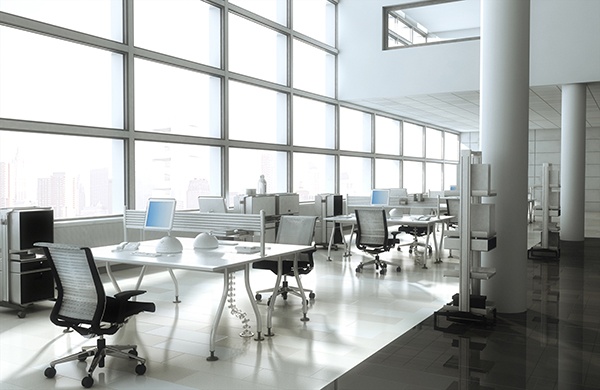
Commercial real estate is one of the largest expenses for any company, so having a key understanding of what it’s costing you to occupy spaces that you rent is vital to managing expenditures. It's not enough to simply know what your total occupancy cost is if you want to find places where you can reduce costs. Using the following metrics can give you a better understanding of whether or not your commercial real estate portfolio is costing you too much.
1. Occupancy Cost Per Square Foot
Your occupancy cost per square foot tells you how much you are paying for each square foot that you occupy. This metric is most beneficial when you are comparing various properties in your portfolio. Compare the occupancy cost per square foot for spaces with similar functions and see if they are roughly the same. If you are paying way more for one location, you may want to consider moving to an entirely new location or searching for another space to rent in the same area. For industrial and warehousing leases, you can do a similar comparison using occupancy post per cubic foot rather than square foot.
2. Occupancy Cost Per Person
This metric is important when deciding if you should close or consolidate non-location sensitive spaces. In these instances, the spaces with the lowest occupancy cost per person are the most cost effective and the best solution for your company since it doesn't matter where they are located. Comparing occupancy cost per person could also alert you to potential waste or unnecessary costs in one of your offices. If two locations with an equal number of people have radically different occupancy costs per person, you can drill down to discover where the additional costs are coming from.
3. Occupancy Cost Per Outcome
In any space, you have a certain goal whether it's generating sales, servicing as many clients as possible or producing as many items as you can. Occupancy cost per outcome gives you a way to see how much you are paying to achieve whatever the goal of the space is. Ideally, spaces that cost you more to occupy will give you a greater outcome than those that do not. If that is not the case, it may be time to move locally or relocate to another region.
4. Occupancy Cost Per Competition
Calculating what your costs would be in another building compared to the one you currently occupy can help you decide whether to renew your lease or walk away from a space. It can also provide leverage for a lease renegotiation with a landlord.
5. Occupancy Cost Percentage
The occupancy cost percentage tells you how much of your total revenue goes toward paying to occupy each space in your portfolio. Calculating this figure for every space that you occupy will give you insight into whether or not you are allocating resources appropriately. The spaces that account for the largest occupancy cost percentage should be vital to your business. If a non-essential space has the highest percentage, you should consider how you can reduce the costs or eliminate the space.
Here are a few other articles to check out:
Office Leasing Terms You Should Know
Ways to Conduct a Commercial Lease Audit
Hidden Occupancy Costs in Your Company's Leases
Subscribe to our blog for more great tips!!








